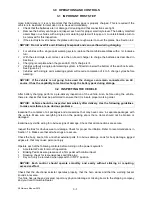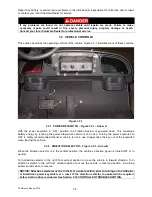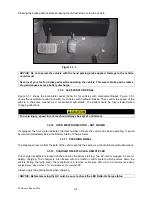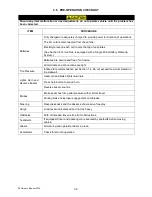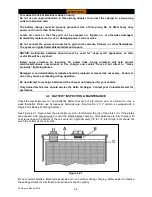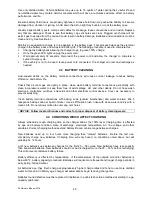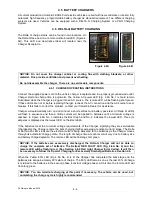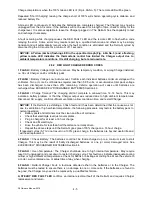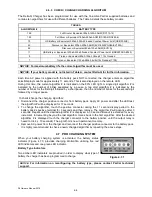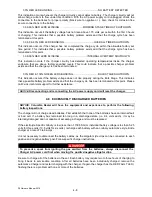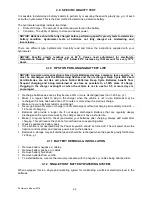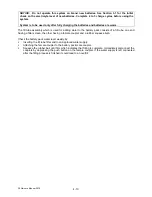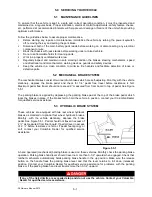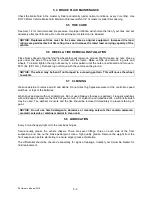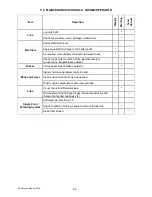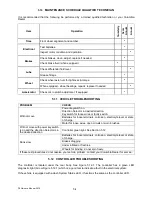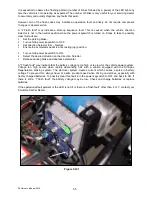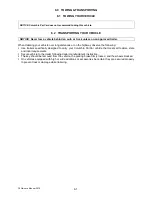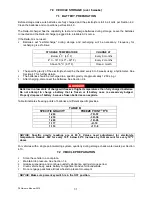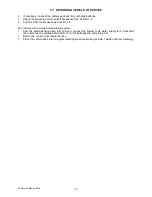
P4
Owner’s Manual 2015
4.9 SPECIFIC GRAVITY TEST
It is possible to determine a battery's ability to perform by measuring the specific gravity (sp. gr.) of each
cell with a hydrometer. This is the best method to determine a defective battery.
The hydrometer readings indicate two things:
State of Charge - The amount of electrical power stored in the battery.
Condition - The ability of battery to store and deliver power.
NOTICE:
Batteries should be fully charged before performing specific gravity tests to determine
battery condition. Hydrometer tests of batteries not fully charged are misleading and
inconclusive.
There are different type hydrometers. Carefully read and follow the instructions supplied with your
hydrometer.
NOTICE:
Specific gravity readings are at 80
0
F. Values need adjustment for electrolyte
temperature. Reduce .004 for every 10
0
F below 80
0
F. Increase by that amount for every 10
0
F
above.
4.10 TIPS FOR PROLONGING BATTERY LIFE
NOTICE:
A common misconception is Deep Cycle Batteries develop a memory, lose capacity, or
must be discharged until the BDI warning flashes and then recharged. Deep Cycle Wet Lead
Acid Batteries are not like cell phone NiCad Batteries. Deep Cycle Batteries benefit from
frequent charging and being maintained at as close as possible to a 100% state of charge.
Plugging in the charger overnight or when the vehicle is not in use for 3-5 or more days is
encouraged.
Recharge batteries as soon as they become 20% or more discharged (less than 1.238 sp. gr.).
Make it a regular habit to plug in the charger when the vehicle is not in use. Batteries may be
recharged if vehicle has been driven 15 minutes or more since the previous charge.
Make sure your electrical outlet is operational.
Never go below 20% state of charge (or 80% discharged) without recharging immediately. Allow 14
–
16 hours of charging.
Batteries will provide a longer life if not deeply discharged. Batteries that are regularly deeply
discharged will require more work by the charger and will have a shorter life.
Make it a regular habit to check (and water) your batteries after charging. Always add water after
charging. This will reduce the chance for overflow due to expanding water.
Weekly equalize the battery pack.
If the vehicle is not operated daily the Power keyswitch should be turned off. This will power down the
traction control system and reduces power loss on the batteries.
Batteries in storage may self discharge and should be recharged when the specific gravity falls below
1.238 sp. gr.
4.11 BATTERY REMOVAL & INSTALLATION
Remove battery negative (-) cables.
Remove battery positive (+) cables.
Remove battery hold down.
Remove batteries from vehicle.
To install batteries, reverse the removal procedure with the negative (-) cables being attached last.
4.12 SINGLE POINT BATTERY WATERING SYSTEM
When equipped, this is a single point watering system for maintaining a sufficient electrolyte level in the
batteries.
4-9

